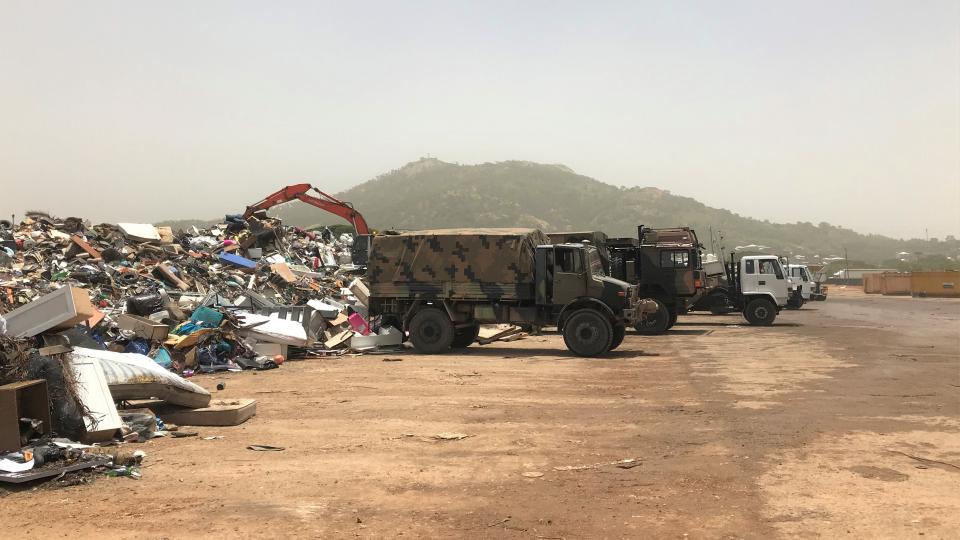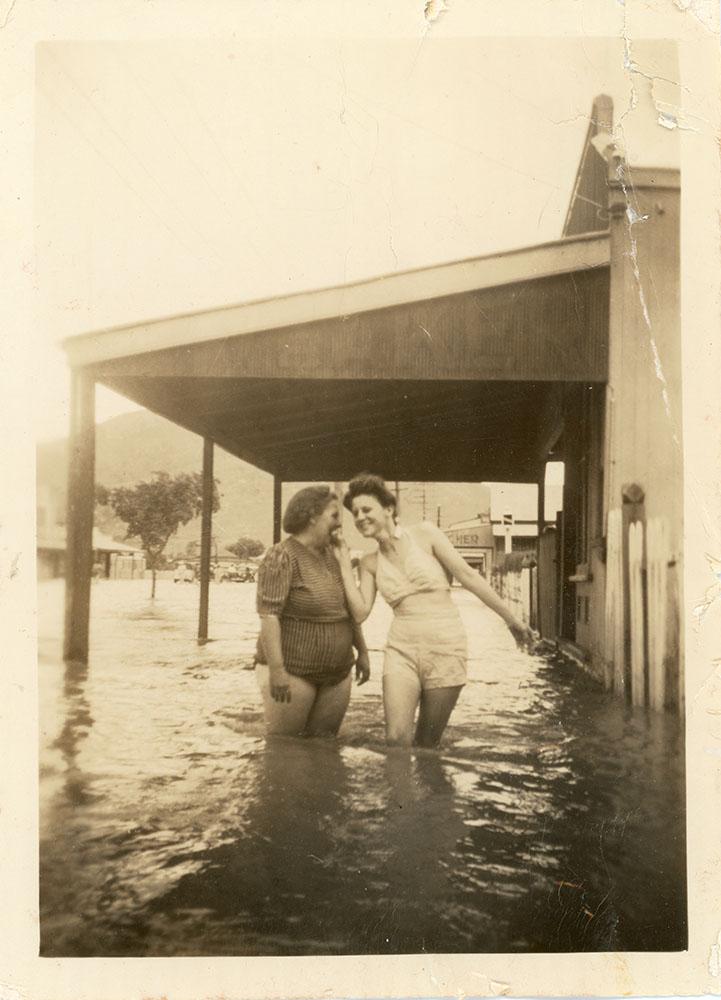During the flooding of Townsville in January and February 2019, around two meters of rain fell within the Ross River catchment over fourteen days. The monumental deluge and subsequent catastrophic flooding gained international media attention after many homes were left uninhabitable and parts of the city became an urban archipelago. As the severity of the effects escalated, Townsville’s community looked to the Queensland and Australian governments to manage the disaster and lead the recovery effort. In response, the Queensland state premier and the Australian federal prime minister visited the city to declare their support, and municipal authorities worked alongside emergency services, weather agencies, and the defense force to deliver critical information and to evacuate and shelter affected residents. Amid the chaos of flooding, there was a familiar sense of civic relief as the rain replenished the city’s water supply. These concerns—abundance and scarcity—run through Townsville’s water history.

Photograph of army trucks clearing flood debris in Townsville, 2019. After the floodwaters had dried up, the Townsville City Council began clearing the mountains of flood debris with the assistance of the Australian Defence Force. This temporary dump site was located near the city center.
Photograph of army trucks clearing flood debris in Townsville, 2019. After the floodwaters had dried up, the Townsville City Council began clearing the mountains of flood debris with the assistance of the Australian Defence Force. This temporary dump site was located near the city center.
Photograph by Patrick White, 2019.
 This work is licensed under a Creative Commons Attribution 4.0 International License.
This work is licensed under a Creative Commons Attribution 4.0 International License.
Townsville’s status as the largest urban settlement in northern Australia suggests that local environmental challenges have been managed well by governments and the community. But the sudden shift from severe drought to catastrophic flood in 2019 indicates that Townsville has not yet solved its challenges with water. The 2019 flood prompted the Insurance Council of Australia to declare Townsville the most flood-prone city in Australia, and in the wake of the disaster, further mitigation attempts are likely; but the city has attempted to tame the wilderness before.
Established in 1864–65 on the Ross River plain, Townsville is located within Queensland’s dry tropics, where drought is common. Since colonial settlement, local governments have battled to secure reliable supplies of water and councils have built expensive pipes to tap into the bounty of wetter climes to the north and to the southwest. Townsville has also endured around 20 major flooding events. The city’s dry spells are often shattered by intense rainfall and, historically, flash and riverine flooding has disrupted society, damaged property and infrastructure, and caused the loss of human lives.

Townsville residents maintaining a sense of humor during a flood in 1946.
Townsville residents maintaining a sense of humor during a flood in 1946.
Photograph by Philip Leong, 1946.
Courtesy of Townsville CityLibraries.
 This work is licensed under a Creative Commons Public Domain Mark 1.0 License.
This work is licensed under a Creative Commons Public Domain Mark 1.0 License.
The early settlement hugged the banks of Ross Creek, a waterway linked to the Ross River. Flooding in 1870, 1881, 1884, 1890, 1892, and 1896 demonstrated how heavy rain, cyclones and tidal surges caused destruction across the city and to its vulnerable port. Townsville owed much of its development to the port, which served pastoral, mining, and (later) sugar interests. While its shallow waters and the sediment left by floods made it navigationally inferior to alternative ports such as Bowen and Cardwell, superior local access to the hinterland elevated the Townsville port’s commercial appeal and motivated flood mitigation.
Early mitigation proposals focused on diverting the upper Ross River into the Bohle River. Charles Napier Bell, a hydro-engineer who worked throughout the Australasian colonies, advised Townsville authorities in the 1890s that such a diversion would provide minimal downstream flooding relief. The diversion was not made, and frequent flooding continued, with civic responses emphasizing recovery and reconstruction. Lengthy droughts also encouraged environmental complacency and led to development in low-lying areas.
During the early twentieth century, drought was a more pressing concern than flooding. Dry weather and population growth had depleted Townsville’s water reserves and by the 1920s, wells dotted the landscape and weirs had been added to the Ross River to augment supply. Even with these measures, when the rains failed the city was parched. The Courier Mail declared that Townsville’s 1935 “wet season” was the driest in the past 66 years, and water restrictions were common.

Water trains were necessary to support Townsville’s dwindling water supply during the Second World War. From 1942, the city’s population was boosted by the presence of tens of thousands of allied defense personnel supporting the war effort in the Pacific Ocean. The trains are marked “Townsville Emergency Water Supply.”
Water trains were necessary to support Townsville’s dwindling water supply during the Second World War. From 1942, the city’s population was boosted by the presence of tens of thousands of allied defense personnel supporting the war effort in the Pacific Ocean. The trains are marked “Townsville Emergency Water Supply.”
Unknown photographer, 1944.
Courtesy of the State Library of Queensland.
 This work is licensed under a Creative Commons Public Domain Mark 1.0 License.
This work is licensed under a Creative Commons Public Domain Mark 1.0 License.
In 1946 floods brought both relief and destruction. The Townsville Daily Bulletin reported the way in which development during periods of drought caused problems during floods. “Townsville has never suffered such devastation from a flood” because “large residential areas [now] lay in the path of the flood water.” In response, local governments launched disaster relief payments and authorities such as the North Queensland Local Government Association (NQLGA) lobbied state and federal governments to make insurance coverage more accessible.
The NQLGA led a regional post-war reconstruction agenda that stimulated further development, and by the 1950s, flooding was an accepted part of life in Townsville because of the revitalizing effects of heavy rain. Rather than restrict development, flooding restored hope and extinguished the doubts about future prosperity that surfaced during droughts.

Townsville’s Hermit Park endures yet another flood, 30 January 1965.
Townsville’s Hermit Park endures yet another flood, 30 January 1965.
Unknown photographer, 1965.
Courtesy of Townsville CityLibraries. Click here to view source.
Used by permission.
The copyright holder reserves, or holds for their own use, all the rights provided by copyright law, such as distribution, performance, and creation of derivative works.
In 1973 the first stage of the Ross River Dam was completed. The dam was designed to address both aspects of the city’s water problems: securing supply and mitigating floods. However, localized flash flooding from heavy rain and tidal surges has continued, and when the dam surged from 15% to 250% during the 2019 rains, the city’s precious liquid resources roared downstream and engulfed new urban developments, which had generally emerged during dry spells and periods of economic growth.
The 2019 floods proved again that the Ross River catchment is a temperamental master. Subjected to the catchment’s impulsiveness, Townsville residents are torn between reacting to drought and responding to deluge, and many understandably exhibit an ambivalence to their environmental reality. But if Townsville is to overcome its challenges with water, its community must develop a stronger appreciation of their environmental reality by using water more efficiently and avoiding development in low-lying areas.
How to cite
White, Patrick. “The Competing Influences of Deluge and Drought in Queensland’s Dry Tropics.” Environment & Society Portal, Arcadia (Spring 2020), no. 5. Rachel Carson Center for Environment and Society. doi.org/10.5282/rcc/9003.
ISSN 2199-3408
Environment & Society Portal, Arcadia
 This work is licensed under a Creative Commons Attribution 4.0 International License.
This work is licensed under a Creative Commons Attribution 4.0 International License.
2020 Patrick White
This refers only to the text and does not include any image rights.
Please click on the images to view their individual rights status
- Bolton, Geoffrey. A Thousand Miles Away: A History of North Queensland to 1920. Brisbane: Jacaranda Press in association with the Australian National University, 1963.
- Cathcart, Michael. Water Dreamers: The Remarkable History of Our Dry Continent. Melbourne: The Text Publishing Company, 2009.
- Griffiths, Dilwyn J. Freshwater Resources of the Tropical North of Australia: A Hydrobiological Perspective. New York: Nova Science Publishers, 2016.
- Fielding, Trisha. Queen City of the North: A History of Townsville. Townsville: Trisha Anne Fielding, 2016.
- Holthouse, Hector. Cyclone. Adelaide: Rigby, 1971.
- Megarrity, Lyndon. Northern Dreams: The Politics of Northern Development in Australia. North Melbourne: Australian Scholarly Publishing, 2018.
- Taylor, Hubert J. The History of Townsville Harbour 1864–1979. Brisbane: Boolarong Publications, 1980.








